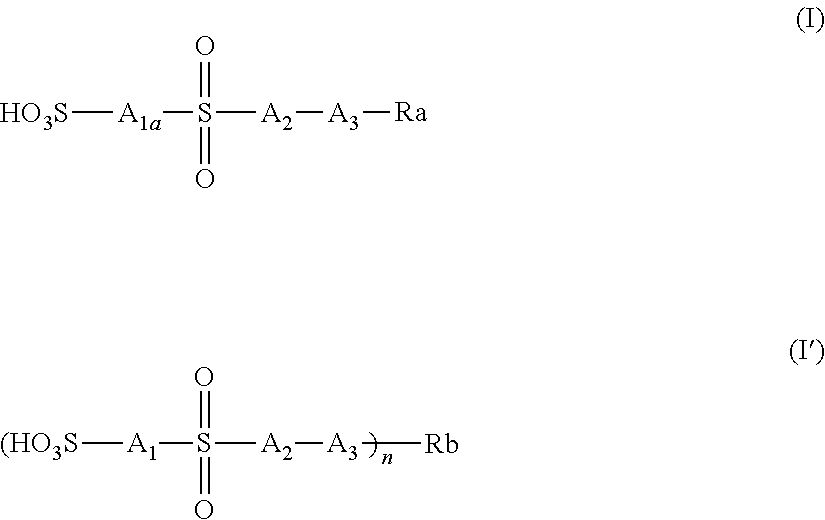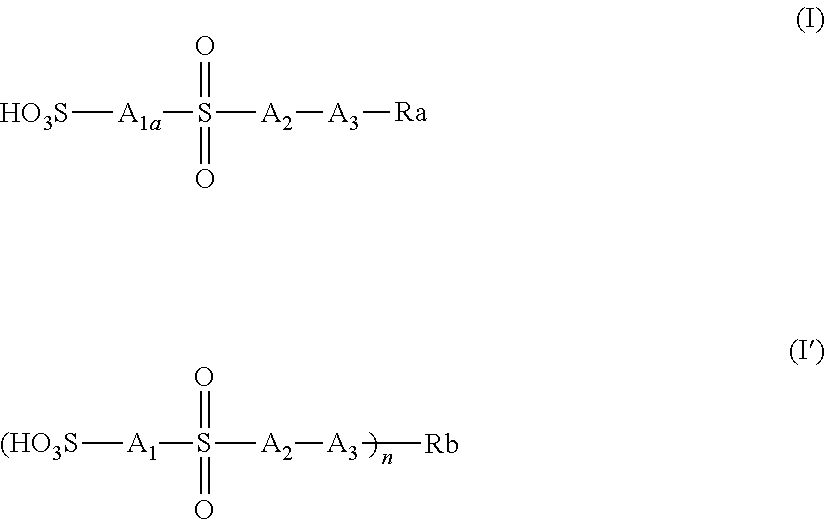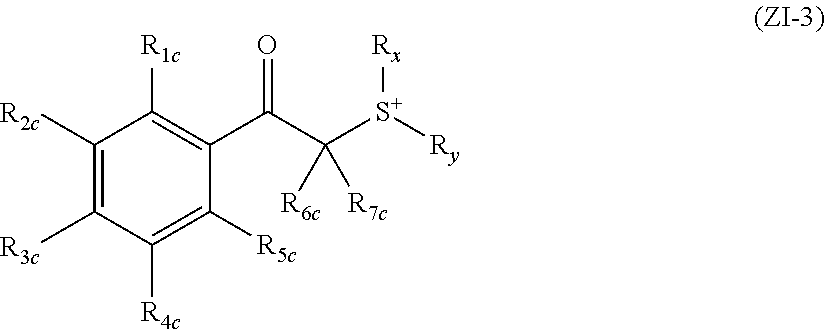Actinic-ray-sensitive or radiation-sensitive resin composition, actinic-ray-sensitive or radiation-sensitive film, and pattern forming method
a technology of resin composition and actinic ray, which is applied in the direction of photosensitive materials, microlithography exposure apparatus, photomechanical apparatus, etc., can solve the problems of insufficient, difficult, and inability to say composition is favorable system,
- Summary
- Abstract
- Description
- Claims
- Application Information
AI Technical Summary
Benefits of technology
Problems solved by technology
Method used
Image
Examples
synthesis example 1
Synthesis of Onium Salt of Triphenylsulfonium 1,1-difluoro-3-(decahydroisoquinoline-2-sulfonyl)methane-1-sulfonate (Photoacid Generator A-2)
(1) Synthesis of 1,1-Difluoromethane-1,1-disulfonyl difluoride
[0766]Bis(fluorosulfonyl)methane was obtained by a method described in Journal of Fluorine Chemistry, 1994, vol. 69, pp. 152-162, using bis(chlorosulfonyl)methane (available from Tokyo Chemical Industry Co., Ltd.) as a starting raw material. 1,1-Difluoromethane-1,1-disulfonyl difluoride was synthesized by a method described in Journal of Fluorine Chemistry, 1997, vol. 83, pp. 145-150 using the above compound as a raw material.
(2) Synthesis of Photoacid Generator A-2
[0767]Under a nitrogen air flow, a mixture of 4.0 g (12.65 mmol) of 1,1-difluoromethane-1,1-disulfonyl difluoride obtained in (1), 2.56 g (25.3 mmol) of triethylamine, and 30 mL of diisopropyl ether was ice-cooled, and a mixed solution of 1.08 g (12.6 mmol) of decahydroisoquinoline and 15 mL of diisopropyl ether was added d...
examples 10 and 11
[0799]Under the same exposure condition 2 except that after forming the above-described resist film having a thickness of 100 nm and before exposure, a top coat composition prepared using the hydrophobic resin described in Table 2 was coated on the resist film, and baked at 115° C. for 60 seconds to form a top coat film having a film thickness of 0.05 μm in the exposure condition 2, a resist pattern was formed.
[0800][Development Defect]
[0801]Using a defect inspection apparatus, KLA 2360 available from KLA Tencor Japan, Ltd., measurement was performed in a random mode by setting a pixel size of the defect inspection apparatus to 0.16 m and a threshold value to 20. Development defects extracted from the difference produced when superposing pixel units with a reference image were detected, and the number of development defects per unit area was computed. A smaller value indicates higher performance.
Evaluation of Pattern Shape
examples 1 to 6 , 8 to 11
Examples 1 to 6, 8 to 11, and 13 to 24, and Comparative Examples 1 to 3
[0803]The cross-sectional shape of a 48-nm line pattern obtained by a minimum exposure amount exhibiting a 48-nm line pattern of a mask was observed by a scanning electron microscope. The rectangular shape is denoted as A, the round-top shape is denoted as C, and a slightly round-top shape is denoted as B.
[0804]In Table 2, it can be seen that the pattern formed using the actinic-ray-sensitive or radiation-sensitive resin composition of the present invention is excellent in the pattern shape and reduction in the development defect, and thus, can be used preferably for an ArF dry exposure process and an ArF liquid immersion exposure.
Preparation of Actinic-Ray-Sensitive or Radiation-Sensitive Resin Composition and Resist Evaluation (2)
PUM
 Login to View More
Login to View More Abstract
Description
Claims
Application Information
 Login to View More
Login to View More - R&D
- Intellectual Property
- Life Sciences
- Materials
- Tech Scout
- Unparalleled Data Quality
- Higher Quality Content
- 60% Fewer Hallucinations
Browse by: Latest US Patents, China's latest patents, Technical Efficacy Thesaurus, Application Domain, Technology Topic, Popular Technical Reports.
© 2025 PatSnap. All rights reserved.Legal|Privacy policy|Modern Slavery Act Transparency Statement|Sitemap|About US| Contact US: help@patsnap.com



